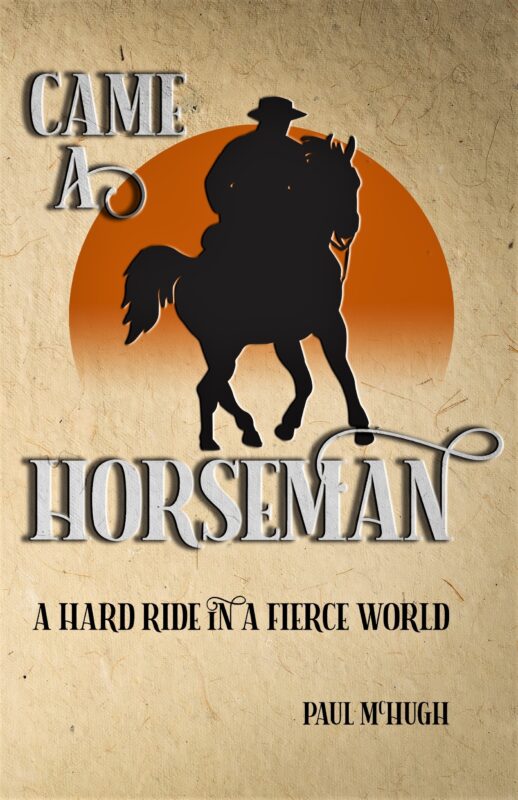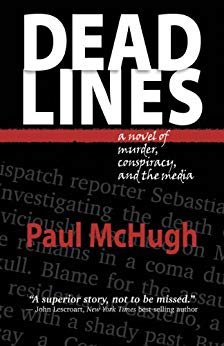California North Coast Series: A Kayak Adventure
Paul McHugh, Outdoors Writer
October 5-6, 2005
I must confess, it felt a bit tough to say farewell to Point Arena. Weed and I both gained a high appreciation for this convivial town, and loved our snug digs up in the urchin shack by the pier. Also, out past the buoy, the sea was kicking up its heels again, displaying 8-9 foot-high swells and 20-knot winds.
But! The date of our scheduled arrival in San Francisco was drawing ever nearer – and there was simply no way to get there without paddling the intervening miles.
So we hand-lined our kayaks back down off the deck, packed them with gear and launched ourselves once again into the foray – and the spray.
Billows That Bestow a Boost
As soon as we rounded the south horn of Point Arena Cove, we grew exposed to full force of the elements. The good part was, the blast of wind and shove of the swell arrived from a bearing almost directly astern. That meant it could easily boost acceleration and add to our forward progress.
We reached open water around 10 a.m. At first, just one wave in ten would pick us up and carry us onward. But by noon, every wave had become its own playground slide, and a few even broke over our sterns to swath us in thick quilts of tumbling foam. Consequently, our paddling adopted a fresh rhythm: throw a flurry of strokes to accelerate enough to catch a wave; then brace and rudder with a blade through the ride; then rotate through another flurry to catch the next swell.
“Aha, I see you’re getting your sprint training session in,” Weed commented.
True, that. But as much fun as it was to be flying southward as shoreline whisked by to our left, these strong conditions also provoked a sizable planning problem. We had some 42 ocean miles to cover before we’d be able to reach our one must-land port, the cove at Fort Ross. That spot was mandatory because I was supposed to meet with a grammar school class within a day or two, and I was also scheduled to file stories on the place. It was too far to paddle today, after we’d made such a late start. Not only that, but the longer we remained out in this rough stuff, the greater our chances of mishap. That’s just due to the law of averages; occasional bad timing while taking brace strokes is a fact of kayaking life.
In my overall planning for this voyage, I’d designated both primary goals for a day’s paddle, as well as bail-out points. Plus, exigencies of our trip thus far had taught me the virtue of being ready and willing to make spontaneous adjustments.
Or, as John Weed likes to put it, “Indecision is the key to flexibility.”
That Which Does Not Drown You, Makes You Wetter
Our most logical goal for this day would have been to make it to Stump Beach Cove at the north end of Salt Point State Park. That would slice a nice 8 miles or so off the total route to Fort Ross, and make for an easy day of completing that entire stretch on the morrow. However, the angle of the swell and direction of the wind meant that a lot of that marine power – besides boosting us along – also funneled straight in to impact Stump Beach. That made neither paddling there to make landfall or struggling back out again the next day a particularly appealing prospect.
As can often occur, circumstances proceeded to make a decision for us.
One must drink plenty of fluids to keep your muscles working. After swilling enough of them, you need to pee. Put it off as long as you can, then you’ll really, really need to pee. And that’s what happened to me. Just as we passed The Fish Rocks near Anchor Bay, the vital moment arrived for me to defuse an IED, i.e. release my close-to-exploding bladder. I called in Weed to raft up our kayaks side-by-side and hold on, popped open my sprayskirt, yanked open the lower zipper on my drysuit, and commenced to filling a baggie. I came within a whisker of getting the task done when a big wave broke over our sterns and poured a torrent of cold water over the rim of my cockpit and onto my crotch. I found this rather stimulating, but not in a good way. I shut my zipper (a top priority), seized my pump, and commenced pumping out – a task I hoped to complete before another big wave broke over us.
But… nope! I almost had the cockpit dry when another wave smashed down to fling more gallons back in my boat. This was nuts. We could either hang out off the Fish Rocks and repeat this cycle ad infinitum, or I could snap the sprayskirt back on and paddle my water-logged boat in for shelter within nearby Anchor Bay. I opted for the latter.
Curling up in a Doghole Port
You can’t beat the Anchor Bay cove for shelter from a Northwester. In fact it had served for decades as yet another doghole port for schooners, equipped in pioneer days with an apron chute for loading on products like tanoak bark and redwood lumber. But whenever winter storms blustered ashore and the prevailing wind switched to southerlies, this bay stood utterly exposed. Nearly a dozen schooners wrecked here on the Fish Rocks in the period 1850-1900.
And I? Well, I did not wreck, oh my droogies. Instead, once within the north (and only!) horn of the cove, I safely pumped out. Then we paddled in to make landfall on the smooth beach of the Anchor Bay Campground – a tidy, family-owned, six-acre site that sits nestled in a bight of Coast Highway 1. Here we made camp, and – since we now had spare time – we walked inland to visit a tiny cluster of buildings that constitutes a village. To our delight, these included a Laundromat where we could wash and dry our moldering garments, before returning to our comfy camp.
And Then, Déjà Vu All Over Again
Conditions didn’t improve by much the following day. The swell did shrink a tad, dropping to 7 feet at 16 seconds, but the northwesterly wind still scudded along at some 20 knots. Once more, we simply had to take the conditions on, and try to make as many miles as we could. Again, navigation consisted of sliding precipitously down the faces of large waves, trying to avoid broaching (being forced sideways) at the bottom as the wave broke, then trying to catch the next one.

We love the smell of guano in the morning. John Weed by an offshore sea stack. Photo by Paul McHugh.
As we paddled out past the white-frosted bulk of Fish Rocks, the stiff breeze blew the ripe stench of accumulated seabird poop straight into our faces. “Love the smell of guano in the morning,” I cracked to Weed. “It reminds me I’m back in my boat.”
Refuge Access Denied
After that, we didn’t speak much, just focused on our paddling, while the shoreside town of Gualala and then the vacation community of Sea Ranch slid past to port. But after about 5 hours of stroking away over some 19 miles, our goal of Stump Beach hove into view – and it looked every bit as bad as I’d feared. A large swell stuffed itself down the throat of the north-facing cove, producing a dull and steady thunder, fleecing the sea surface in turbulent foam, and sending a white fogbank of spume drifting vaguely through the air.
We discussed our options, then backtracked northward to inspect our only option for shelter, a tiny peninsula that hooked out to the west, with a thin line of rocky shore at its base.
“It does face the right way,” Weed said. “But see how wet the ledge at the base is, there? We might set up camp, only to get ourselves washed out later.”
I sought to recall what I’d seen while checking my tidebook that morning. “High tide should be just about now, or we’re here maybe an hour after,” I said. “I think that it peaked around 6 feet. The next high tide occurs around 3 a.m., and should be lower, like 4 feet. I’d say, if we build up that ledge a little bit, we should be good.”
“But what if we’re not?”
“Well, tie your kayak’s bowline to one ankle. If you feel it tug on you in the middle of the night, get up and go jump in your cockpit.”
“What about our tents?”
“Good point. So, after you get up, untie the line from your ankle, tie it onto the tent, then jump in your cockpit. Tow it away behind you.”
“Excellent plan,” Weed proclaimed, with a dollop of sarcasm.
A Marginal Bivouac Site
Our requisite bout of banter completed, we did proceed to gamble on making our camp right at that spot. We could’ve picked a better place, but there wasn’t one. So we landed, mounded up rock and driftwood and sand, then leveled out tent-sized pads atop the debris. We pitched our shelters right up against the low cliff, brewed up some stew and settled in for the night. And no, we didn’t tie the kayaks to our legs, but to some exposed roots in the cliff face. Of course, in such a setting, we also had to worry about loose rocks rumbling down from the friable cliffs. Fortunately, that did not happen. And when I awoke at 3 a.m. to shine my flashlight out the door of the tent, I could see the waves were only surging up to within about a yard of our tent pads. No big deal. By which I mean, I’ve seen worse.










